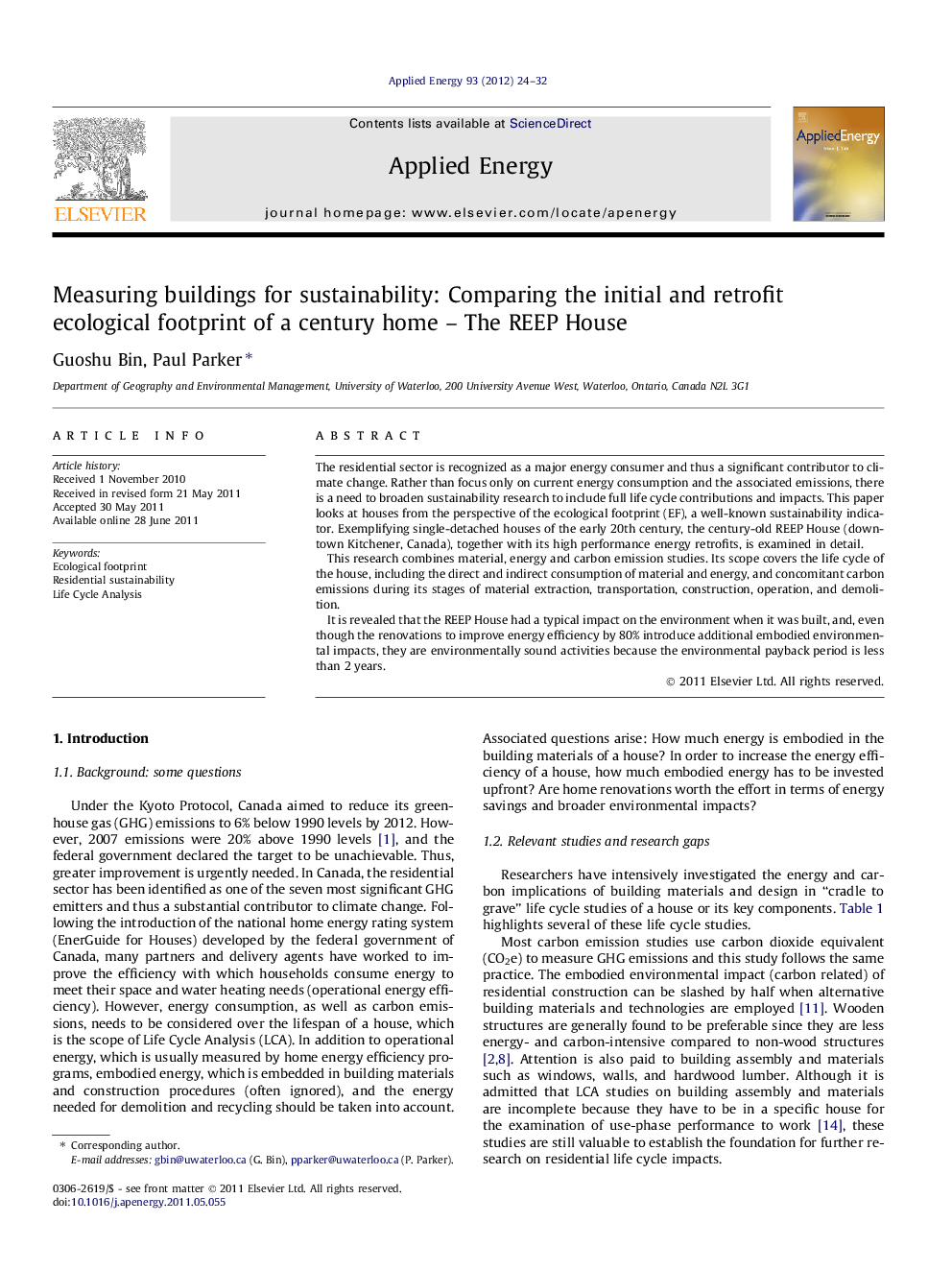| کد مقاله | کد نشریه | سال انتشار | مقاله انگلیسی | نسخه تمام متن |
|---|---|---|---|---|
| 243301 | 501927 | 2012 | 9 صفحه PDF | دانلود رایگان |

The residential sector is recognized as a major energy consumer and thus a significant contributor to climate change. Rather than focus only on current energy consumption and the associated emissions, there is a need to broaden sustainability research to include full life cycle contributions and impacts. This paper looks at houses from the perspective of the ecological footprint (EF), a well-known sustainability indicator. Exemplifying single-detached houses of the early 20th century, the century-old REEP House (downtown Kitchener, Canada), together with its high performance energy retrofits, is examined in detail.This research combines material, energy and carbon emission studies. Its scope covers the life cycle of the house, including the direct and indirect consumption of material and energy, and concomitant carbon emissions during its stages of material extraction, transportation, construction, operation, and demolition.It is revealed that the REEP House had a typical impact on the environment when it was built, and, even though the renovations to improve energy efficiency by 80% introduce additional embodied environmental impacts, they are environmentally sound activities because the environmental payback period is less than 2 years.
► Life cycle energy, carbon and ecological footprints of a century home are studied.
► The operational impact accounts for most of the total lifecycle impact.
► Sourcing energy-intensive materials locally only reduces embodied impacts a little.
► Deep energy retrofits (80% savings) achieved substantial environmental benefits.
► The environmental payback period of major energy retrofits is less than 2 years.
Journal: Applied Energy - Volume 93, May 2012, Pages 24–32